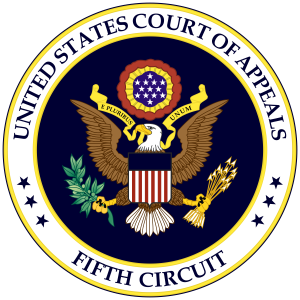 Purchasers of brand name ulcerative colitis drugs brought putative class action against drug manufacturers under state antitrust laws, alleging the manufacturers suppressed generic entry for drug by pulling it from market at same time a new drug was introduced. The District Court certified the class under Rule 23(b)(3), but the U.S. First Circuit Court of Appeals reversed.
Purchasers of brand name ulcerative colitis drugs brought putative class action against drug manufacturers under state antitrust laws, alleging the manufacturers suppressed generic entry for drug by pulling it from market at same time a new drug was introduced. The District Court certified the class under Rule 23(b)(3), but the U.S. First Circuit Court of Appeals reversed.
Following the First Circuit’s 2015 Nexium decision, the District Court reasoned that, if unrebutted, a consumer’s testimony that given the choice, he or she would have purchased the generic would be sufficient to establish injury in an individual suit. It therefore concluded that similar testimony in the form of an affidavit or declaration would be sufficient in a class action when introduced at the liability stage.
“Here, though, the record is clear that plaintiffs do not propose to rely on unrebutted testimony to eliminate the question of injury-in-fact before trial. And, unlike in Nexium, defendants have expressly stated their intention to challenge any affidavits that might be gathered…. Our inability to fairly presume that these plaintiffs can rely on unrebutted testimony in affidavits to prove injury-in-fact is fatal to plaintiffs’ motion to certify this case. Testimony that is genuinely challenged, certainly on an element of a party’s affirmative case, cannot secure a favorable summary judgment ruling disposing of the issue. And the affidavits would be inadmissible hearsay at trial, leaving a fatal gap in the evidence for all but the few class members who testify in person. Nor have the plaintiffs provided any basis from which we could conclude that the number of affidavits to which the defendants will be able to mount a genuine challenge is so small that it will be administratively feasible to require those challenged affiants to testify at trial.”
Distinguishing the case from Tyson Foods, the Court explained that “using the average time it takes a person to don and doff clothes to estimate how long it takes a given individual to do so (as in Tyson Foods) is quite different than saying, for example, that a given person wore certain clothes merely because most but not all others did so. If statistically valid, an average multiplied by the total number of individuals likely equals the actual total time spent by all. But Dr. Conti’s estimate that a generic drug would achieve roughly ninety percent market penetration, if used to prove that each individual would have likely purchased the generic drug and was thus injured by defendants’ conduct, leads to the demonstrably wrong conclusion that one hundred percent of individuals were injured. And that is a contention that Dr. Conti’s opinion itself rejects.”
The Court then rejected Plaintiffs’ argument that the defendant would be protected from any practical harm, as “Warner would only be found liable and forced to pay damages if the jury found that Warner’s actions unlawfully raised the price paid by consumers by a specified amount, and if the jury also determined the percentage of sales for which that price surcharge would not have been paid but for the illegal conduct. The total aggregate damages award would therefore in theory net out all purchases by brand loyal consumers as a group. The fact that some of that money might then be paid to uninjured people should be of no concern to Warner, say plaintiffs.” The Court, however, focused on the different types of aggregate damages scenarios. “In some cases, the total damage caused by the defendant is independent of the number and identity of people harmed. Newberg gives as an example a trustee’s theft of money from a pension fund. Such a case perhaps might be tried as a class action without causing any harm to the defendant no matter how the recovered funds are allocated among the beneficiaries (although there would still be the question whether Article III nevertheless precludes per se the knowing use of a civil suit to make an award to an uninjured person). In many other instances, as here, the aggregate damage amount is the sum of damages suffered by a number of individuals, such that proving that the defendant is not liable to a particular individual because that individual suffered no injury reduces the amount of the possible total damage. Furthermore, here the district court has reasonably presumed that determining whether any given individual was injured (and therefore has a claim) turns on an assessment of the individual facts concerning that person. In such a case, the defendant must be offered the opportunity to challenge each class member’s proof that the defendant is liable to that class member. Whether that opportunity precludes class certification turns on whether such challenges are reasonably plausible in a given case and whether the plaintiff cannot demonstrate that allowing for such challenges in a manner that protects the defendant’s rights will be manageable and superior to the alternatives.”
In re Asacol Antitrust Litigation, 907 F.3d 42 (1st Cir. 2018).
0 Comments